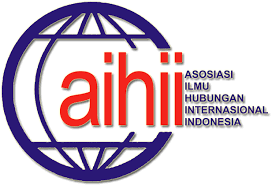Islamic Revolution of Iran
Comparation Between Religious Revolution and Social Revolution
Abstract
The 1979 Islamic Revolution in Iran stands as one of the most complex and challenging revolutions in modern history, as it not only overthrew the Pahlavi monarchy but also established an Islamic republic that integrates religious and political values. This article departs from the question: to what extent can the Iranian Islamic Revolution be explained through theories of social revolution and/or religious revolution? To address this, the study compares two theoretical perspectives: Theda Skocpol’s theory of social revolution, which emphasizes structural and institutional factors, and Imam Ali Khamenei’s concept of religious revolution rooted in Qur’anic values and spirituality. Using a qualitative approach and a descriptive-comparative method, this study finds that the Iranian Islamic Revolution cannot be fully understood solely through structural or spiritual lenses, but rather represents a unique synthesis of material change and ideological transformation—thereby offering a new model of revolution that transcends the conventional Western dichotomy between religion and the social.
Downloads
References
Afary, J. & Anderson, K.B. (2005). Foucault and the Iranian Revolution: Gender and the Seductions of Islamism. Chicago: University of Chicago Press.
Chehabi, H.E. (1993). The Politics of Anti-Imperialism in Iran. Dalam John L. Esposito, ed., Islam and Politics in the Middle East. London: Palgrave Macmillan.
Chehabi, H.E. (1993). The Politics of Anti-Imperialism in Iran, Middle Eastern Studies, vol. 29, no. 3, hlm. 460–475.
Fischer, M.M.J., 1980. Iran: From Religious Dispute to Revolution. Cambridge, MA: Harvard University Press.
H. Gholami, H. & Khodadadi, B. (2016). Criminal Policy as a Product of Political and Economic Conditions: Analyzing the Developments in Iran since 1979. Jurnal ZSTW, [online] 128(2), 606-627. Dalam: https://doi.org/10.1515/zstw-2016-0022 [Diakses 15 Juni 2025]
Hakim, S.A. (2018). Islam and government: an analytical review on Khumayni’s Kashf al-Asrār and Wilāyat al-Fāqih. Indonesian Journal of Islam and Muslim Societies, [online] 8(1), 147-171. Dalam: https://doi.org/10.18326/IJIMS.V8I1.147-171 [Diakses 15 Juni 2025]
Hooglund, E. (1980). Rural Participation in the Revolution, MERIP Reports, no. 87, hlm. 3.
Ibrahimian, H. (2024). Velayatul Faqih and the Resurgence of Islamic Movements Worldwide. Ampera: A Research Journal on Politics and Islamic Civilization, [online] 5(1), 36-42 https://doi.org/10.19109/ampera.v5i01.22868 [Diakses 15 Juni 2025]
Keddie, N.R. (2006). Modern Iran: Roots and Results of Revolution. New Haven: Yale University Press.
Khamenei, A. (1349 Hs). Majmūʿah-ye Bayānāt va Sokhanrānīhā (Kumpulan Pidato). Tehran: Markaz-e Asnād-e Enqelāb-e Eslāmī.
Khamenei, A. A. (2005). Tarh-e kolli-ye andishe-ye Eslami dar Qur'an. Teheran: Markaz-e Nashr-e Farhangi-ye Enghelab-e Islami.
Khamenei, A. A. (n.d.). A ruler’s legitimacy derives from people or God? Retrieved May 23, 2025, from https://english.khamenei.ir/news/5048/A-Ruler-s-Legitimacy-Derives-from-People-or-God-Ayatollah-Khamenei Diakses 23 Mei 2025].
Khamenei, A. A. (n.d.). Responsibilities of the Supreme Leader. Retrieved May 23, 2025, from https://english.khamenei.ir/news/6132/What-are-Supreme-Leader-s-responsibilities-Imam-Khamenei-answers Diakses 23 Mei 2025].
Kurzman, C. (2004). The Unthinkable Revolution in Iran. Cambridge: Harvard University Press.
Kusumo, A.A.N. (2024). Factors Driving Contemporary Islamic Civilization From Iran's Shiah Perspective. Journal of Islamic Civilization, [online] 5(2), 222-236. Dalam: https://doi.org/10.33086/jic.v5i2.5483 [Diakses 15 Juni 2025]
Milani, M. (2006). Iran’s Islamic Revolution and the International System. The Middle East Journal, [online] 60(1), 1–20.
Pesaran, E. (2008). Towards an Anti-Western Stance: The Economic Discourse of Iran's 1979 Revolution. Iranian Studies, [online] 41(5), 693-718. Dalam: https://doi.org/10.1080/00210860802518343 [Diakses 15 Juni 2025]
Prorochenko, N. (2020). Iran: from white revolution to islamic anti-Shah revolution (socio-political transformations analysis). Bulletin of Mariupol State University. Series: History. Political Studies, [online] 10(28-29), 251-260. Dalam: https://doi.org/10.34079/2226-2830-2020-10-28-29-251-260 [Diakses 15 Juni 2025]
Skocpol, T. (1979). States and Social Revolutions: A Comparative Analysis of France, Russia, and China. Cambridge: Cambridge University Press.
Skocpol, T. (1982). Rentier State and Shi’a Islam in the Iranian Revolution, Theory and Society, vol. 11, no. 3, hlm. 265–283.
Vatandoust, G. & Sheipari, M. (2023). Modified J-Curve Theory, Iran’s Socio-Economic Bottlenecks and the 1979 Fall of the Pahlavi Monarchy. Middle East Critique, [online] 32(1), 111-127. Dalam: https://doi.org/10.1080/19436149.2023.2168381 [Diakses 15 Juni 2025]







